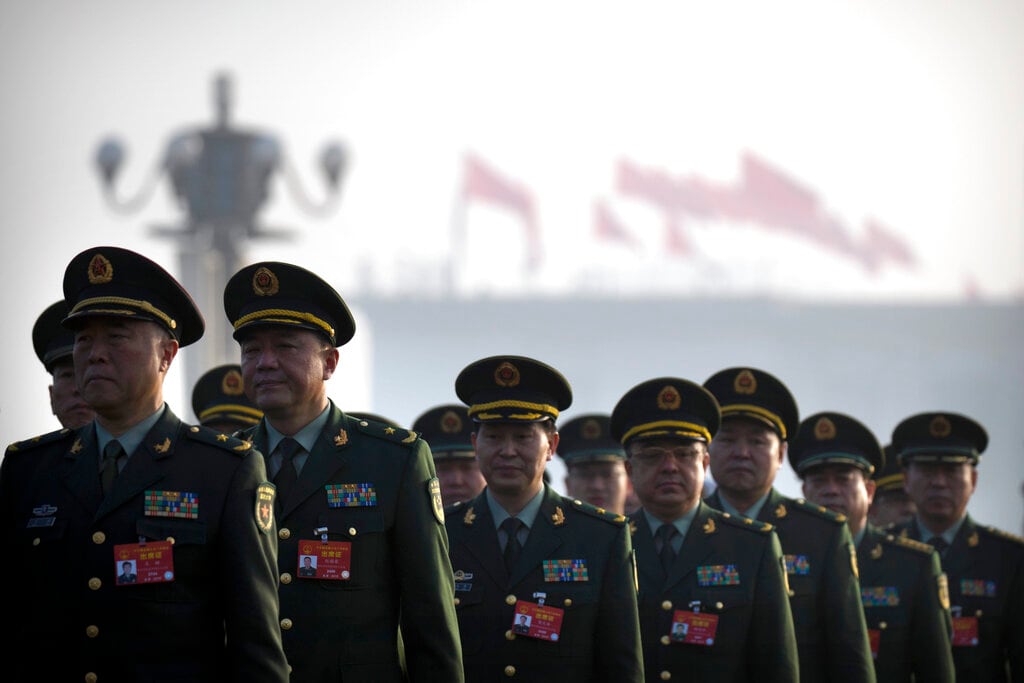The White House nominee to be the Pentagon’s top uniformed official said the Department of Defense needs to improve its non-kinetic capabilities.
As the department shifts to prioritizing competition against China and Russia, which feature cyber, electronic warfare and information warfare tools that can create confusion and loss of confidence in systems, the United States will have to invest in these systems in kind, said Army Gen. Mark Milley, the nominee to become the chairman of the Joint Chiefs of Staff.
RELATED

In a questionnaire released as part of his confirmation hearing July 11, Milley wrote that, in combating Russian actions below the threshold of military conflict, additional “information operations” capabilities would benefit European Command, adding he would look closely at capabilities if confirmed. When asked if there are other DoD organizations that should be merged to increase unity of effort under the banner of information warfare, similar to how the Air Force is merging two of its numbered Air Forces to create the first information warfare numbered Air Force. Milley said it will be a priority initially.
U.S. adversaries and competitors, such as Russia and China, are restructuring their military forces around the concept of information, an approach that views cyber, space, electronic warfare and information operations as one discipline, not separate and siloed domains. Each of the U.S. services have taken similar steps to consolidate these capabilities to provide a singular organization with integrated and related capabilities.
Milley also said the Pentagon should better integrate capabilities and planning for cyber and information warfare.
“The first Line of Effort of the 2018 DoD Cyber Strategy is to empower timely integrated cyber operations,” Milley wrote in the questionnaire. “Objectives of this Line of Effort include … normalizing cyberspace operations across the Joint Force; and normalizing cyberspace operations and cyber mission force role in the defense support to civil authorities process.”
In the area of electronic warfare, Milley said the department has adequately integrated electronic warfare tools but that there is room for improvement. Adversaries have invested heavily in these capabilities, which can jam communications, cause confusion and geolocate forces.
China’s “People’s Liberation Army’s electronic warfare (EW) units are well-resourced, featuring strategic, operational, and tactical EW systems that even surpass some advanced foreign capabilities,” Milley wrote. “Russia has attempted to prioritize modernization and development of EW systems as a critical asymmetric force enabler. Despite this, much of Russia’s ground-based equipment still lags behind modern systems. They have been able to test these systems in combat, including operations in Syria, thereby gaining valuable operational experience.”
The department is addressing these gaps through the EW executive committee and the Electromagnetic Spectrum Operations Cross Functional Team, which was mandated in last year’s annual defense policy bill.
RELATED

Milley also noted that the Pentagon is moving toward a concept referred to as Electromagnetic Spectrum Operations, or EMSO. This philosophy “reflects a shift in focus from individual platforms to a broader approach that includes new sensor capabilities, information management, and methods to utilize the Electromagnetic Spectrum as a weapon. Efforts are also underway to better assess the readiness of the Joint Force to operate in spectrally-contested environments,” Milley wrote.
This effort has been spearheaded by William Conley, director of electronic warfare in the office of the Under Secretary of Defense.
Conley, in an interview with C4ISRNET in June, noted how under the legacy connotation of electronic warfare, each discipline — electronic attack, electronic protection and electronic support — were considered individually separate.
“In a multi-function world, which is enabled by software defined radios, we now can do a wide variety of different functions through the exact same devices,” he said. “The term EMSO, electromagnetic spectrum operations … is really about how do we do all of those things dynamically through a finite number of apertures but also how do we battle manage all of these different things, which are happening in the electromagnetic spectrum today.”
Mark Pomerleau is a reporter for C4ISRNET, covering information warfare and cyberspace.







